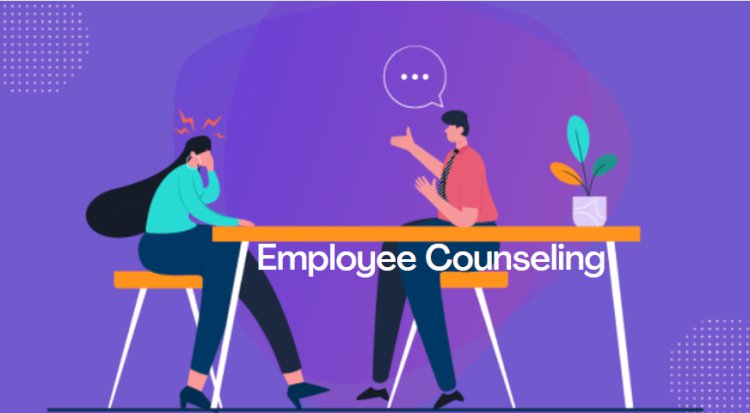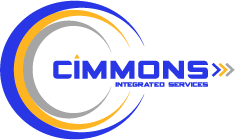Employee Counseling

In order for a business to be successful, it needs to work like a well-oiled machine most of the time. For that to happen, everything should be in top condition, from all the equipment that is being used to the productivity of the employees.
However, even if the employees share the values and the vision of the company, their performance is still sometimes less than desirable. The business owner or manager should take immediate action if they see an employee's productivity declining. While it could just be a common burnout case, it could also be a bigger problem.
If you do notice an issue with any of your employees, consider providing them with counseling. An employee who is passionate about their job will do anything it takes in order to get back on the right track. With this in mind, here are five steps to effectively guide your employees to improve their workplace performance.
5 STEPS TO EFFECTIVE EMPLOYEE
COUNSELING
1. ADDRESSING THE PROBLEMS HEAD-ON
The first step, of course, is approaching your employee to inform them that there is a problem with their performance. You can set up a private meeting to discuss their performance issues in detail. Set a date, time and place and allow them to bring along a support person if that would make them feel more comfortable.
During the meeting, explain all the issues you have noticed and provide them with as many details as possible. Make sure you are friendly and approachable since you want this to have a positive outcome; you don't want to come off too harsh and scare them away. Ask if they realized that their performance has been declining and determine whether they have some personal troubles that are negatively affecting their work. Then, if they are willing to improve their behavior, you can offer them counseling and work out exactly what can be done to solve the issues at hand.
2. CHOOSING THE APPROPRIATE TYPE OF COUNSELING
Next up, you have to decide on the kind of counseling required. There are three to choose from: directive, non-directive and participative counseling. When it comes to directive counseling, the counselor plays a big role in setting up the course of action concerning what should be done. They also reassure the employee and serve as a motivator for them. On the other hand, with non-directive counseling, the employee is free to express their feelings and get to the root of the problem, as well as come up with the potential solution on their own. The counselor is there to support them and encourage them to make decisions based on what they personally want to do.
Both of the methods mentioned above have their limitations. That is why participative counseling is known as the middle ground and it’s used in most situations. This approach allows the counselor and employee to collaborate and solve the problem together. The type of counseling should be chosen on an individual basis because everyone is different, so not all counseling works for everyone.
3. RELYING ON INNOVATIONS IN THE HR SECTOR
If it’s established that a certain employee’s decrease in productivity is a result of workplace burnout, there are preventative measures you can take. Your HR department should be on the lookout for signs of burnout, and noticing these signs can be made easier by implementing certain tech innovations.
Artificial intelligence has started playing a big role in analyzing the behavior of workers, and it can often tell when somebody is acting out of the ordinary. Collecting data on the employees’ typical work patterns can help HR decide whether someone needs a break or a vacation. Furthermore, while the opinions on using AI differ, people can also opt to solve their issues with the help of a virtual AI psychologist. AI psychologists are designed to appropriately help people solve any issues they have, so this may be a viable option to guide employees down the best path.
4. GIVING USEFUL FEEDBACK TO EMPLOYEES
It could be the case that a manager has not been giving any feedback to their employees, so they did not take the time to analyze their performances and notice their issues early on. To avoid this in the future, make sure to have regular performance reviews. It is also beneficial to talk to employees and ensure them they can always come to you for any problem they might be having.
Provide them with specific details in terms of their performance and potential areas of improvement. Don’t just tell them that they are doing great; actually list all the things they are doing well. The more specific you are, the better the chance they will know exactly what they should improve in themselves. You should do this during counseling sessions as well – that way, they will know where their progress stands.
5. DON’T FORGET TO FOLLOW UP
After the counseling period is completed, you should still pay close attention to that particular employee. You need to make sure they are following the suggested methods of improvement. See how they’re behaving in a real work setting and whether their performance is actually better than before.
After some time, call them in for another meeting. Ask them how they are doing, if they feel different now, whether there is something else bothering them or something they think can be improved upon more. Go through their results, and if they are positive, encourage the employee to continue working at their newly improved level. If the outcome is not as good as you had anticipated, explore your options – do they need more counseling, a warning, or should their employment be terminated?
Considering you’ve invested extensive time and money in your employees, it’s not a smart business move to terminate them and look for new workers. That is the main reason why implementing counseling sessions and following these useful steps should be a great help to all.

 Anupam Upadhyay
Anupam Upadhyay 

















